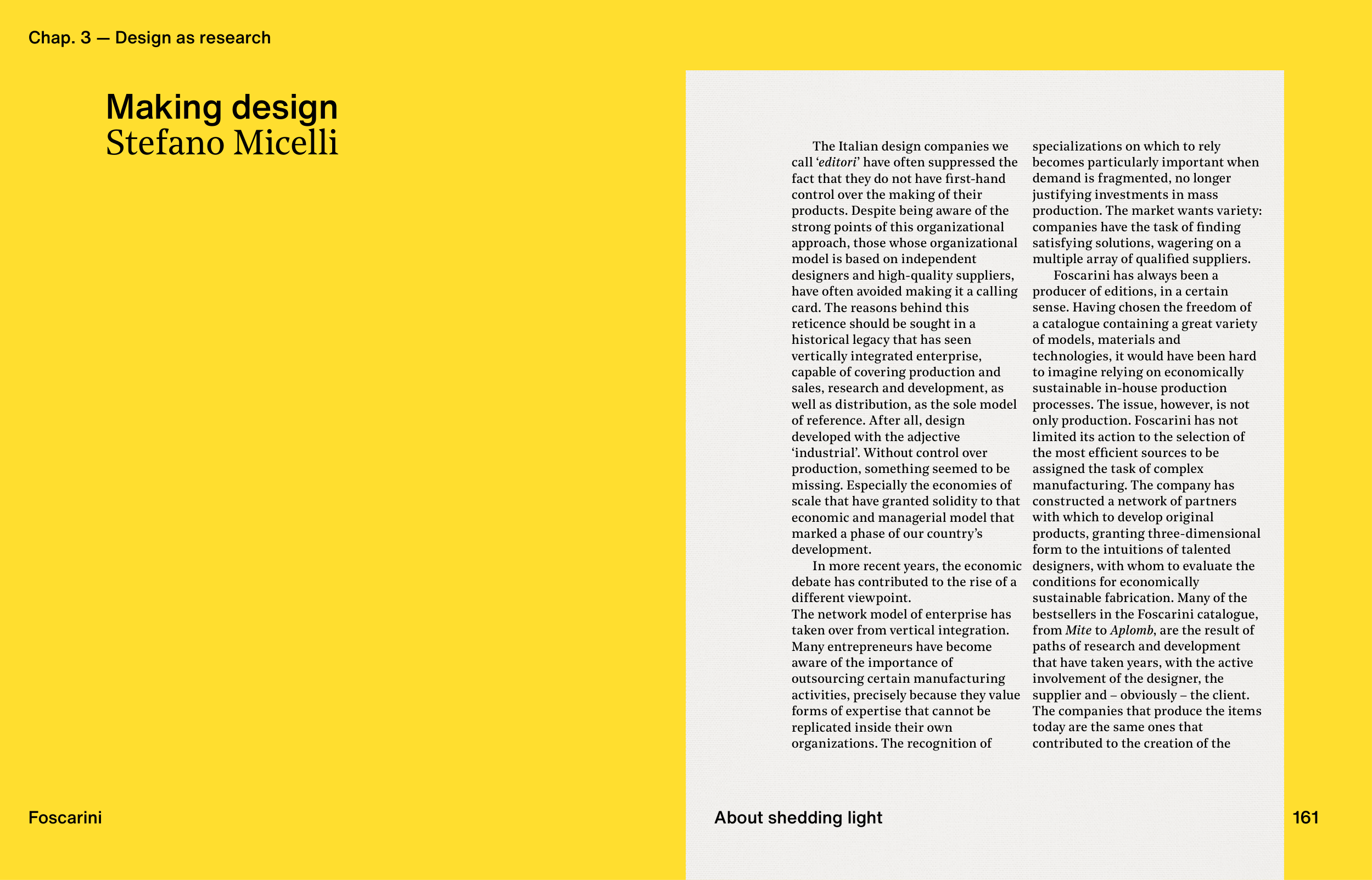161
Foscarini
Chap. 3 — Design as research
Making design
Stefano Micelli
The Italian design companies we
call ‘editori’ have often suppressed the
fact that they do not have fi rst-hand
control over the making of their
products. Despite being aware of the
strong points of this organizational
approach, those whose organizational
model is based on independent
designers and high-quality suppliers,
have often avoided making it a calling
card. The reasons behind this
reticence should be sought in a
historical legacy that has seen
vertically integrated enterprise,
capable of covering production and
sales, research and development, as
well as distribution, as the sole model
of reference. After all, design
developed with the adjective
‘industrial’. Without control over
production, something seemed to be
missing. Especially the economies of
scale that have granted solidity to that
economic and managerial model that
marked a phase of our country’s
development.
In more recent years, the economic
debate has contributed to the rise of a
different viewpoint.
The network model of enterprise has
taken over from vertical integration.
Many entrepreneurs have become
aware of the importance of
outsourcing certain manufacturing
activities, precisely because they value
forms of expertise that cannot be
replicated inside their own
organizations. The recognition of
specializations on which to rely
becomes particularly important when
demand is fragmented, no longer
justifying investments in mass
production. The market wants variety:
companies have the task of fi nding
satisfying solutions, wagering on a
multiple array of qualifi ed suppliers.
Foscarini has always been a
producer of editions, in a certain
sense. Having chosen the freedom of
a catalogue containing a great variety
of models, materials and
technologies, it would have been hard
to imagine relying on economically
sustainable in-house production
processes. The issue, however, is not
only production. Foscarini has not
limited its action to the selection of
the most effi cient sources to be
assigned the task of complex
manufacturing. The company has
constructed a network of partners
with which to develop original
products, granting three-dimensional
form to the intuitions of talented
designers, with whom to evaluate the
conditions for economically
sustainable fabrication. Many of the
bestsellers in the Foscarini catalogue,
from Mite to Aplomb, are the result of
paths of research and development
that have taken years, with the active
involvement of the designer, the
supplier and – obviously – the client.
The companies that produce the items
today are the same ones that
contributed to the creation of the
About shedding light
161


